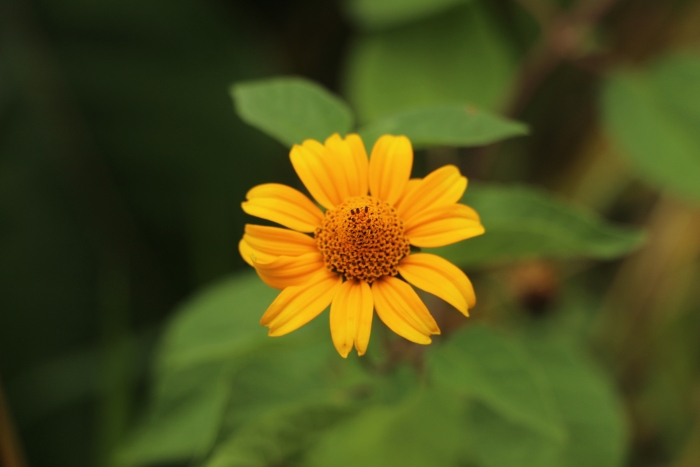False Sunflower
(Heliopsis buphthalmoides)
False Sunflower (Heliopsis buphthalmoides)
/
/

© Andrés Ramírez-Barrera
CC BY 4.0
Image By:
© Andrés Ramírez-Barrera
Recorded By:
Copyright:
CC BY 4.0
Copyright Notice:
Photo by: © Andrés Ramírez-Barrera | License Type: CC BY 4.0 | License URL: http://creativecommons.org/licenses/by/4.0/ | Uploader: nicolasr | Publisher: iNaturalist |

























Estimated Native Range
Summary
Heliopsis buphthalmoides, commonly known as False Sunflower, is a perennial herb that is native to a wide range of habitats including prairies, meadows, open woodlands, and forest edges from North America to South America. It is found from Mexico in states such as Durango and Sinaloa, south to Chiapas, throughout all seven countries of Central America, and in western South America including Colombia, Venezuela, Perú, and Bolivia. This species is adaptable to various elevations and environmental conditions.
False Sunflower typically grows to a height of 3 to 6 feet (0.9 to 1.8 meters) with a similar spread. It has a bushy, upright habit and produces daisy-like flowers with bright yellow petals and a central brown or purplish-brown disk. The flowers bloom from early summer to fall and are highly attractive to pollinators. The plant’s resilience and long blooming period make it a popular choice for ornamental use in borders, wildflower gardens, and as cut flowers. In cultivation, Heliopsis buphthalmoides prefers full sun to part shade, well-drained soil, and moderate water. It is relatively low-maintenance but can be susceptible to powdery mildew and leaf spot diseases. Deadheading spent flowers can encourage additional blooming and prevent self-seeding, which can be aggressive in some conditions.CC BY-SA 4.0
False Sunflower typically grows to a height of 3 to 6 feet (0.9 to 1.8 meters) with a similar spread. It has a bushy, upright habit and produces daisy-like flowers with bright yellow petals and a central brown or purplish-brown disk. The flowers bloom from early summer to fall and are highly attractive to pollinators. The plant’s resilience and long blooming period make it a popular choice for ornamental use in borders, wildflower gardens, and as cut flowers. In cultivation, Heliopsis buphthalmoides prefers full sun to part shade, well-drained soil, and moderate water. It is relatively low-maintenance but can be susceptible to powdery mildew and leaf spot diseases. Deadheading spent flowers can encourage additional blooming and prevent self-seeding, which can be aggressive in some conditions.CC BY-SA 4.0
Plant Description
- Plant Type: Herb
- Height: 3-6 feet
- Width: 2-3 feet
- Growth Rate: Moderate
- Flower Color: Yellow
- Flowering Season: Summer
- Leaf Retention: Deciduous
Growth Requirements
- Sun: Full Sun, Part Shade
- Water: Medium
- Drainage: Medium
Common Uses
Bird Garden, Border Plant, Butterfly Garden, Groundcover, Low Maintenance
Natural Habitat
native to a wide range of habitats including prairies, meadows, open woodlands, and forest edges from North America to South America
Other Names
Common Names: False Sunflower, Oxeye Daisy
Scientific Names: , Heliopsis buphthalmoides, Acmella buphthalmoides, Acmella buphthalmoides, Acmella mutisii, Acmella occidentalis, Acmella oppositifolia, Andrieuxia mexicana, Anthemis americana, Anthemis buphthalmoides
GBIF Accepted Name: